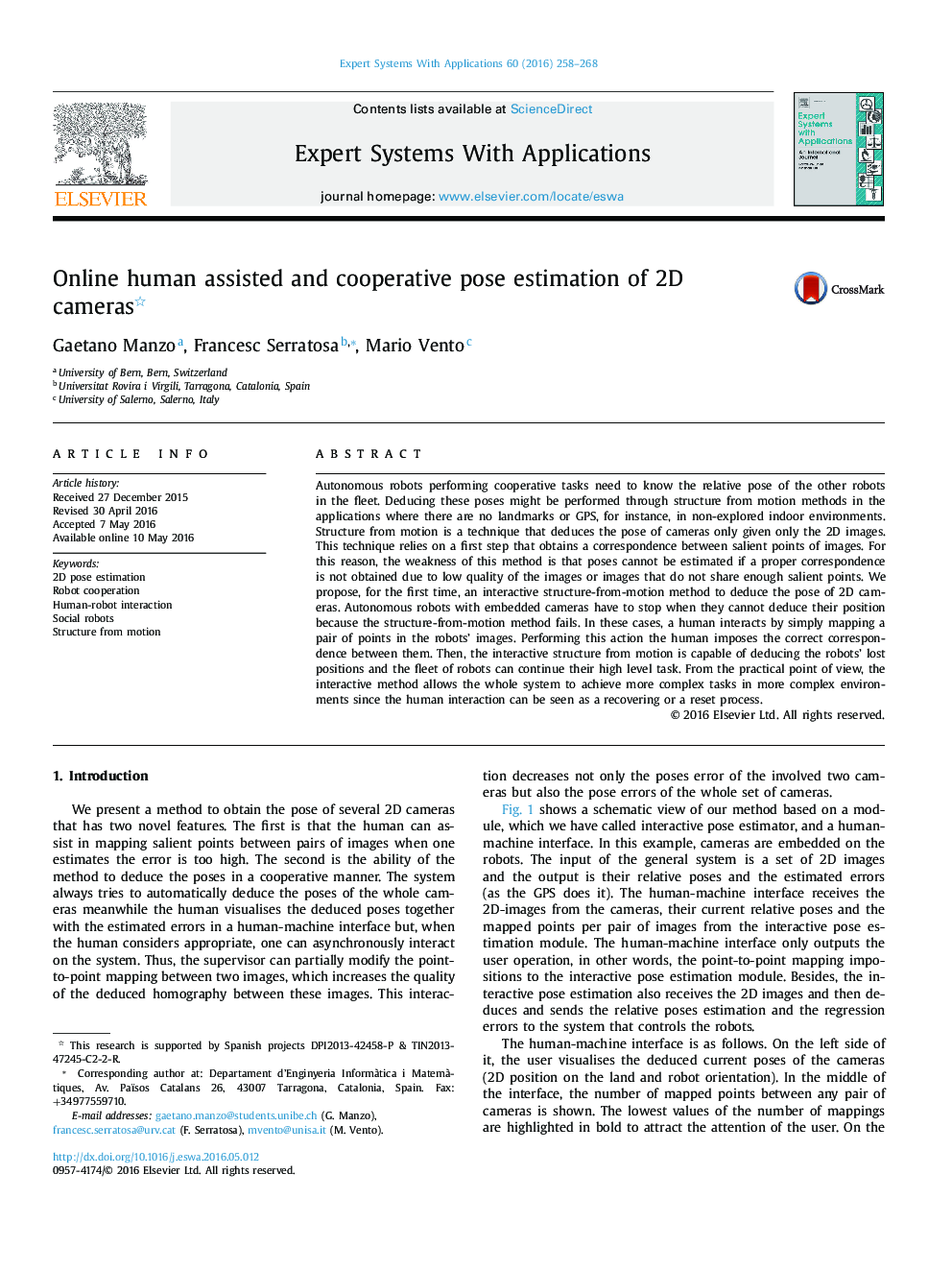| کد مقاله | کد نشریه | سال انتشار | مقاله انگلیسی | نسخه تمام متن |
|---|---|---|---|---|
| 383122 | 660802 | 2016 | 11 صفحه PDF | دانلود رایگان |
• Active and interactive method to deduct pose estimation of a fleet of robots.
• Pose estimation based interactive structure pose estimation.
• Cooperative Pose estimation when direct alignment is not possible.
Autonomous robots performing cooperative tasks need to know the relative pose of the other robots in the fleet. Deducing these poses might be performed through structure from motion methods in the applications where there are no landmarks or GPS, for instance, in non-explored indoor environments. Structure from motion is a technique that deduces the pose of cameras only given only the 2D images. This technique relies on a first step that obtains a correspondence between salient points of images. For this reason, the weakness of this method is that poses cannot be estimated if a proper correspondence is not obtained due to low quality of the images or images that do not share enough salient points. We propose, for the first time, an interactive structure-from-motion method to deduce the pose of 2D cameras. Autonomous robots with embedded cameras have to stop when they cannot deduce their position because the structure-from-motion method fails. In these cases, a human interacts by simply mapping a pair of points in the robots’ images. Performing this action the human imposes the correct correspondence between them. Then, the interactive structure from motion is capable of deducing the robots’ lost positions and the fleet of robots can continue their high level task. From the practical point of view, the interactive method allows the whole system to achieve more complex tasks in more complex environments since the human interaction can be seen as a recovering or a reset process.
Journal: Expert Systems with Applications - Volume 60, 30 October 2016, Pages 258–268
